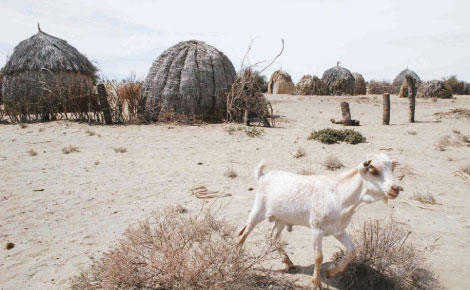 |
|
Kenya’s performance has been rated below par compared to its neighbours, with only 55 per cent of the rural population able to access clean and safe water though Burundi leads the pack at 73 per cent. [Photo/Kelvin Karani] |
By WINSLEY MASESE
Nearly half of Kenyans live in abject poverty, a new World Bank report reveals. This is second after Burundi, which has 67 per cent of its population poor, followed by Rwanda at 44.9 per cent.
According to the World Development Indicator (WDI) released last week, Uganda has the lowest poverty levels at 24 per cent with Tanzania’s standing at 28 per cent.
However, Kenya showed its prowess in generating national income in the region. East Africa’s largest economy created about Sh74 billion ($860 million) as Gross National Income (GNI) in 2012.
Rwanda, which has enjoyed a favourable ranking by the World Bank in the ease of doing business emerged as Kenya’s closest rival generating about Sh51 billion (600$ million).
Access to clean water
Burundi reported the lowest GNI of Sh20 billion ($240 million), half as that of Uganda with Tanzania registering $30 million shy of Rwanda.
Kenya also performed below par compared to its neighbours, with only 55 per cent of the rural population able to access clean and safe water. Burundi leads the pack at 73 per cent.
About 68 per cent of the rural population in Rwanda access water while in Tanzania, 44 per cent are able. As an indication of being the most industrialised nation in the region, Kenya had about 0.3 per cent of the carbon dioxide emissions as a percentage of the per capita, the highest in the region.
Rwanda and Uganda have their emissions at 0.1 per cent with Tanzania’s standing at 0.2 per cent.
Burundi had no emissions, making it the most environment-friendly country to live in.
In primary school enrollment, Burundi outsmarted the region registering the highest primary school enrollment, at 137 per cent followed by Rwanda at 134 per cent.
Kenya emerged third at 112 per cent with Uganda and Tanzania registering 110 and 93 per cent, respectively. The WDI is a compilation of relevant, quality, and internationally comparable statistics about global development and the fight against poverty.
“It intends to help policymakers, students, analysts, professors, program managers, and citizens find and use data related to all aspects of development, including those that help monitor and understand progress toward the two goals of the World Bank Group,” it said.
shared prosperity
Some of the global objectives by the bank include ending extreme poverty by 2030 and promoting shared prosperity targeting to uplift one million people a week from extreme poverty for the next 16 years.
The highlights present some of the key trends in topics such as poverty, health, education, gender, the environment, the economy, governance, investment, aid, trade, debt and capital flows.
It also provides an overview of progress towards the Millennium Development Goals, the people, the environment, the economy, States and markets, and global links.
 The Standard Group Plc is a multi-media organization with investments in media
platforms spanning newspaper print operations, television, radio broadcasting,
digital and online services. The Standard Group is recognized as a leading
multi-media house in Kenya with a key influence in matters of national and
international interest.
The Standard Group Plc is a multi-media organization with investments in media
platforms spanning newspaper print operations, television, radio broadcasting,
digital and online services. The Standard Group is recognized as a leading
multi-media house in Kenya with a key influence in matters of national and
international interest.
 The Standard Group Plc is a multi-media organization with investments in media
platforms spanning newspaper print operations, television, radio broadcasting,
digital and online services. The Standard Group is recognized as a leading
multi-media house in Kenya with a key influence in matters of national and
international interest.
The Standard Group Plc is a multi-media organization with investments in media
platforms spanning newspaper print operations, television, radio broadcasting,
digital and online services. The Standard Group is recognized as a leading
multi-media house in Kenya with a key influence in matters of national and
international interest.










